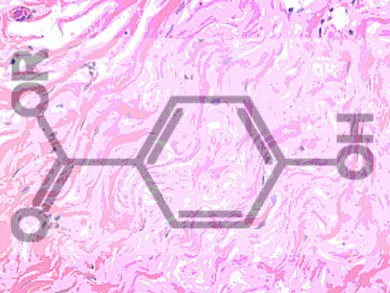Traces of Parabens in Breast Tissue Samples
New research into the potential link between parabens and breast cancer has found traces of the chemicals in breast tissue samples from all of the women in the study. Parabens are commonly used as preservatives in cosmetics, food products and pharmaceuticals. As the research shows that parabens are measurable in the tissue of women who do not use underarm cosmetics the parabens must enter the breast from other sources.
Breast tissue samples were taken from 40 women, with the results showing that all of the women had at least one paraben in their tissue. The research, published in the Journal of Applied Toxicology, was a collaborative study led by Dr Philippa Darbre, University of Reading, UK, and Mr Lester Barr, University Hospital of South Manchester, UK.
Potential Link Between Parabens and Breast Cancer
The research team studied tissue samples from 40 women undergoing mastectomies between 2005 and 2008 for first primary breast cancer in England. In total, 160 samples were collected, four from each woman, covering serial locations from the axilla (nearest the armpit) to the sternum (breast bone). 99 % of the tissue samples contained at least one paraben and 60 % of the samples had five.
A number of studies since 1998 have raised concerns about the potential role of parabens in breast cancer as these chemicals possess oestrogenic properties and oestrogen is known to play a central role in the development, growth and progression of breast cancer. In particular, a link was proposed between the disproportionate incidence of breast cancer in the upper outer quadrant of the breast and oestrogenic chemicals in that region, maybe from local application of underarm cosmetic products.
“Our study appears to confirm the view that there is no simple cause and effect relationship between parabens in underarm products and breast cancer” said Mr Lester Barr, consultant surgeon at the University Hospital of South Manchester and Chairman of the Genesis Breast Cancer Prevention Appeal, which part sponsored the study.
“The intriguing discovery that parabens are present even in women who have never used underarm products raises the question: where have these chemicals come from?”
Key Findings of the Study Included
- One or more paraben esters were detected in 158 of the 160 samples studied (99 %) and 96 of the samples (60 %) contained all five of the most common paraben esters.
- The overall median value for total parabens in the breast tissue was 85.5 ng/g – one billionth of a gram of parabens per gram of breast tissue – ranging from 0 ng/g to 5134.5 ng/g. This level was four times higher than the 20.6 ng/g recorded by a smaller study in 2004.
- Overall median values for the individual parabens were highest for n-propylparaben (16.8 ng/g) and methylparaben (16.6 ng/g), with lower levels for n-butylparaben (5.8 ng/g), ethylparaben (3.4 ng/g) and isobutylparaben (2.1 ng/g).
- There was a disproportionate incidence of breast cancer in the upper outer quadrant nearest the armpit and significantly higher levels of n-propylparaben were detected in the axilla region, closest to the armpit, than in the mid or medial regions. The other four parabens were equally distributed across all parts of the breast.
“The fact that parabens were detected in the majority of the breast tissue samples cannot be taken to imply that they actually caused breast cancer in the 40 women studied,” said Dr Philippa Darbre, Reader in Oncology at the University of Reading, who also led the 2004 study. “However, the fact that parabens were present in so many of the breast tissue samples does justify further investigation.”
 Measurement of paraben concentrations in human breast tissue at serial locations across the breast from axilla to sternum,
Measurement of paraben concentrations in human breast tissue at serial locations across the breast from axilla to sternum,
L. Barr, G. Metaxas, C. Harbach, L.-A. Savoy, P. Darbre,
J. Appl. Toxicol. 2012.
DOI: 10.1002/jat.1786




